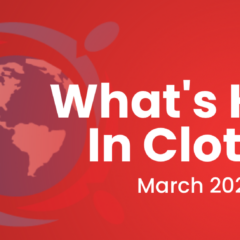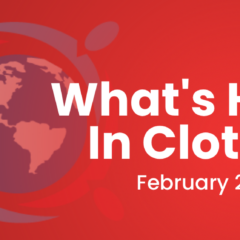Last updated on
Clot Chronicles: Direct Oral Anticoagulants (DOACs) and Obesity
Hi, my name is Dr. Christian Ruff, and I’m the Director of General Cardiology at Brigham and Women’s Hospital. I’m also a clinical trialist and have done a lot of work in anticoagulation both for stroke prevention in atrial fibrillation (Afib), as well as the treatment and prevention of venous thromboembolism (VTE).
As we know, anticoagulation’s very effective in both of these disorders, but there’s been a lot of questions about the implementation of these drugs in patients with a variety of comorbidities. And there has been particular interest regarding the ability to use these drugs in patients who are overweight, particularly patients who are morbidly obese.
So, let’s first of all talk a little bit about definitions. You can use body weight or body mass index (BMI). When we’re talking about very obese patients that we’re concerned about with anticoagulation, generally people have used thresholds of a BMI of 35 or above—certainly 40 or above—or a body weight of 120 kg or above. There had been some data that suggests that due to differences in volume of distribution, the concentrations of both the Xa and IIa inhibitors were less in patients who had a BMI potentially above 30 or 40, or patients who had a body weight of 120 kg or above. There was a concern that that lower concentrations were going to lead to an increased risk of thrombotic events.
I’ll tell you my summary of both the clinical trial data, as well as the real-world data, in patients who are obese and morbidly obese. It turns out that although the drug concentrations may be slightly different and may be a little bit lower, the therapeutic window for these drugs is very wide – much wider than warfarin where we’re targeting a very narrow INR between 2 and 3. And although there may be differences in concentrations by 10% or a little bit more, there isn’t any data that suggests that those small differences in concentrations lead to a loss of efficacy. In fact, obese and morbidly obese patients have some of the lowest event rates both for stroke and bleeding, particularly in patients with Afib, and similar trends are actually seen in patients who have obesity and VTE.
And so although there have been guidelines—most notably the International Society of Thrombosis and Hemostasis (ISTH), one of the hematology guidelines—that cautioned people not to use the DOACs in patients who had a BMI of above 40 or weight above 120 kg, the data suggests that these drugs can actually be used quite safely in those patients. And, I think in the totality of evidence, particularly in the Afib space, that there is now convincing data from clinical trials—both the ARISTOTLE trial with apixaban and the ENGAGE trial with edoxaban and particularly for the Xa inhibitors—that shows even at the extremes of body weight, patients with a BMI well above 40 do very, very well, and there’s no loss of efficacy in these patients.
So, my conclusion—and the totality of the data and the guidelines have now generally broadly supported this—is that there really is no weight or BMI threshold at which you should withhold these agents. Across the entire range of weight and BMI, these drugs show preferential advantages with respect to warfarin and other vitamin K antagonists. That’s largely due to the fact that these drugs have very wide therapeutic ranges with respect to their concentration. So, although there may be very small differences in the concentrations in obese or morbidly obese patients compared to normal-body-weight patients, that does not translate clinically into any meaningful difference.
So, I hope that’s been helpful for you and convinces you that these agents really can be used in the vast majority of patients regardless of their underlying comorbidities. Thank you.



